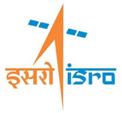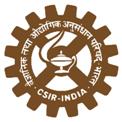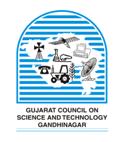| Title | Speech in Mobile and Pervasive Environments |
|---|
| Faculty | Amit A Nanavati, Nitendra Rajput |
|---|
| Affiliation | IBM India Research Laboratory, New Delhi |
|---|
| Content | "Speech in Mobile and Pervasive Environments” proposes to deal with issues related to speech processing on resource-constrained, wireless, mobile devices including: Speech recognition in noisy environments, the use of context to enhance recognition, the emerging and new standards required for interoperability, speech applications on mobile devices, distributed processing between the client and the server, and the relevance of SiMPE for developing regions, an area of explosive growth in the last 3-4 years.
Until recently, speech processing has been the pursuit of a handful of researchers working in laboratories on specialised applications. The proliferation of the mobile device is making speech
“mainstream”. Many novel and interesting applications are being offered on the mobile device, and the mobile platform brings its own opportunities and constraints. There is a rapidly growing interest as indicated in academic conferences and workshops (Mobile HCI, Pervasive Computing), as well as considerable investment in the industries (for example, Telecom industry).
There is a large number of professionals, across many disciplines – computer science, electrical engineering, UI design and information technology – who are creating applications and solutions for this mobile platform. Standards such as VXML and technologies such as VoIP are emerging. In our tutorial, we will give a flavour of the various issues surrounding SiMPE. It will fill the gaps for the electrical engineer, as well as the information technologist so that they get an all-round view of the issues and approaches around SiMPE.
more
Register Now
|
|---|
Top |
| |
| Title | Hands-on Session on ARM targets |
|---|
| Faculty | Nitin Paranjape |
|---|
| Affiliation | Edutech Learning Solutions P. Ltd., Vadodara |
|---|
| Content | Introduction to ARM7 & IDE (Integrated Development Environment), Hand-on with ARM7 Platform & Interfacing with basic peripheral, Debugging & Hand-on with RTOS (UII-COS), Introduction to ARM9 Target along with basic experiments including Linux Kernel Compilation/Flashing for the target, Image Processing using ARM9+DSP with Davinci Platform.
Register Now
|
|---|
Top |
| |
| Title | Wavelet Signal Processing |
|---|
| Faculty | Hemant Patil |
|---|
| Affiliation | DA-IICT |
|---|
| Content | The main objective of this tutorial is to conduct a study on wavelet theory from both theoretical and application perspective (such as signal compression, denoising, and pattern recognition) in a coherence manner. The course first builds up background on LTI operators and Fourier analysis (including Shannon’s sampling theory) and its short comings.
Windowed Fourier Transform (WFT) and Continuous Wavelet Transform (CWT) are introduced along with analysis of admissibility condition for mother wavelet. One of most important aspect in wavelet theory, i.e., regularity analysis and vanishing moments of wavelets along with detection of singularity and zeros-crossing using WT is discussed. DWT is introduced from Multiresolution Analysis (MRA) point of view. Mallat’s algorithm (which relates MRA and WT with QMF banks) is studied. Different factors affecting wavelet design are studied and spline wavelets (e.g., quadratic spline, cubic-spline) are designed.
more
Register Now |
|---|
Top |
| |















